Last Updated on September 1, 2023 by Devour Tours | Published: November 14, 2019
With a café on every corner, Paris is a prime location for gastronomic delights, whether you’re grabbing a quick bite, settling in for a three-course meal, or sampling Michelin-star tasting menus.
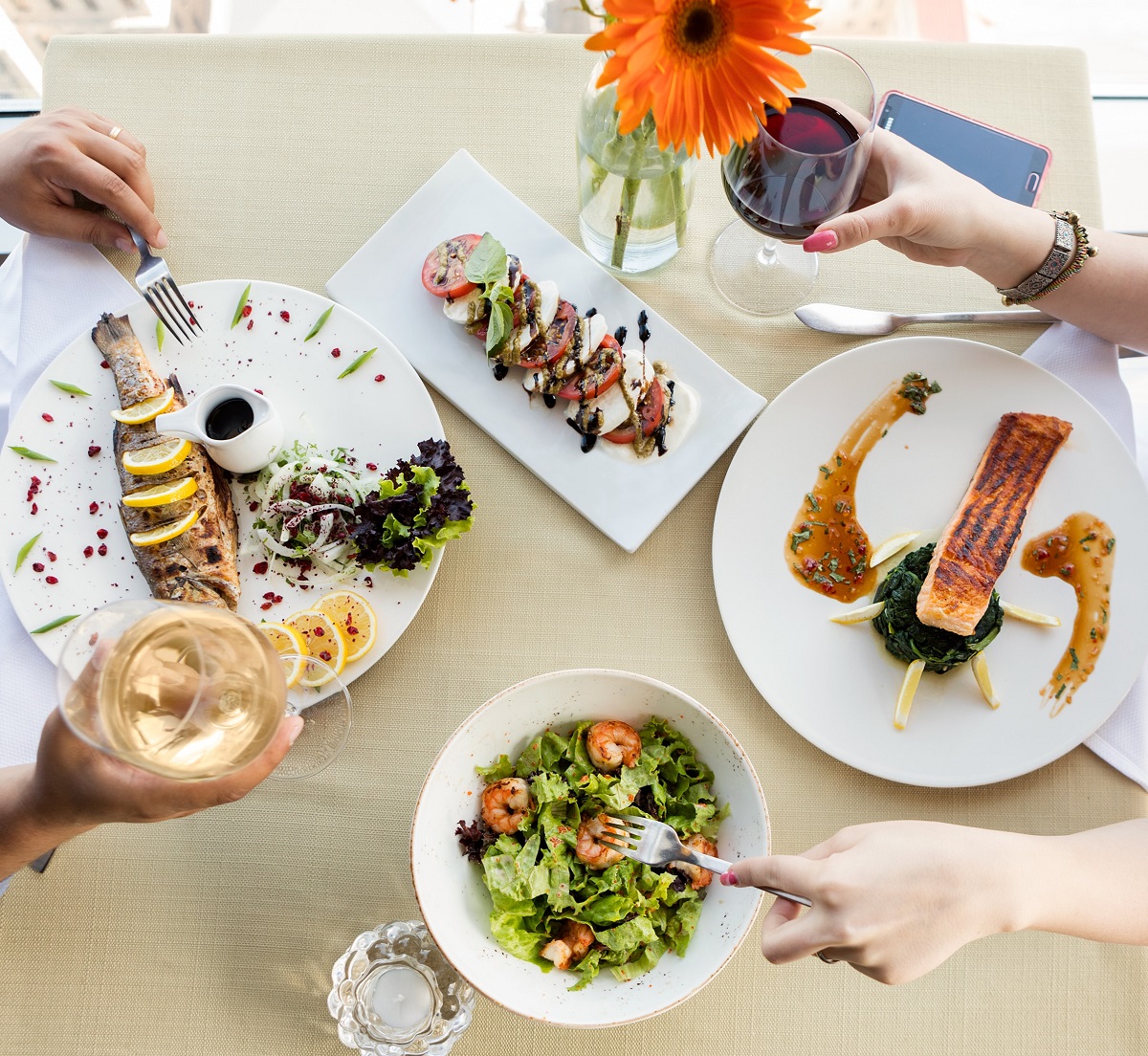
If you don’t speak French, however, restaurant menus might prove more confusing than your local spot at home. Luckily, the reality of the French dining experience is less intimidating than it might seem! Here are some of our top tips for ordering in France that will help you feel practically Parisian yourself once you master them.
What's Included
Choosing a Restaurant
First things first: where to eat?
Not next to the closest monument. While there are occasional exceptions to this rule, the restaurants you’ll find crowded around major tourist attractions tend to be more about tourism and convenience rather than quality.
Opt for a more local spot by avoiding restaurants with flag bunting or greeters waiting to entice you inside. Sometimes this is a matter of walking just a couple blocks away from the tourist attraction you’re visiting.
Now what? French eateries can be advertised as cafés, bistros, bouillons, brasseries, or restaurants.Take a look at prices and dishes to determine the best fit for your dining experience. Cafés tend to offer more casual snacking options like croque monsieur, while bouillons offer traditional French fare at affordable prices.
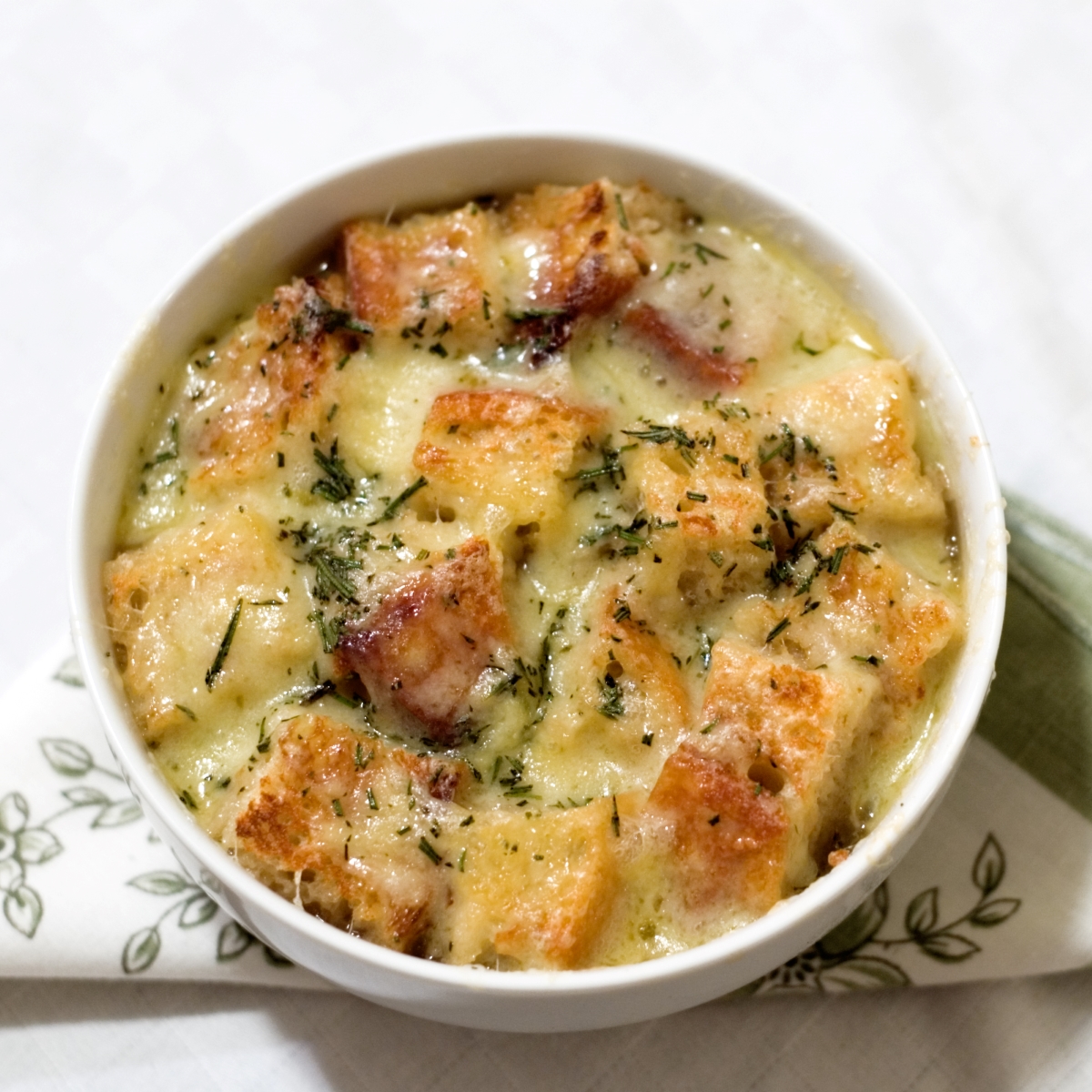
What Time to Eat
It’s no secret that Europeans tend to eat slightly later than their North American counterparts, but the French keep it pretty reasonable.
While some restaurants advertise service contenu, or nonstop kitchen service, many restaurants take a break between meals. Lunch service tends to run from 12–3 p.m., while dinner runs from 7 p.m. to around 11 p.m. Dinner service tends to get crowded around 8 p.m., when most French people grab a table, so it can be helpful to reserve ahead if your heart is set on a specific restaurant.
Seems simple, right? Don’t forget that most restaurants advertise opening and closing times using a 24-hour clock. That means you’ll see that lunch service runs from 12h–15h, while dinner runs from 19h–23h.
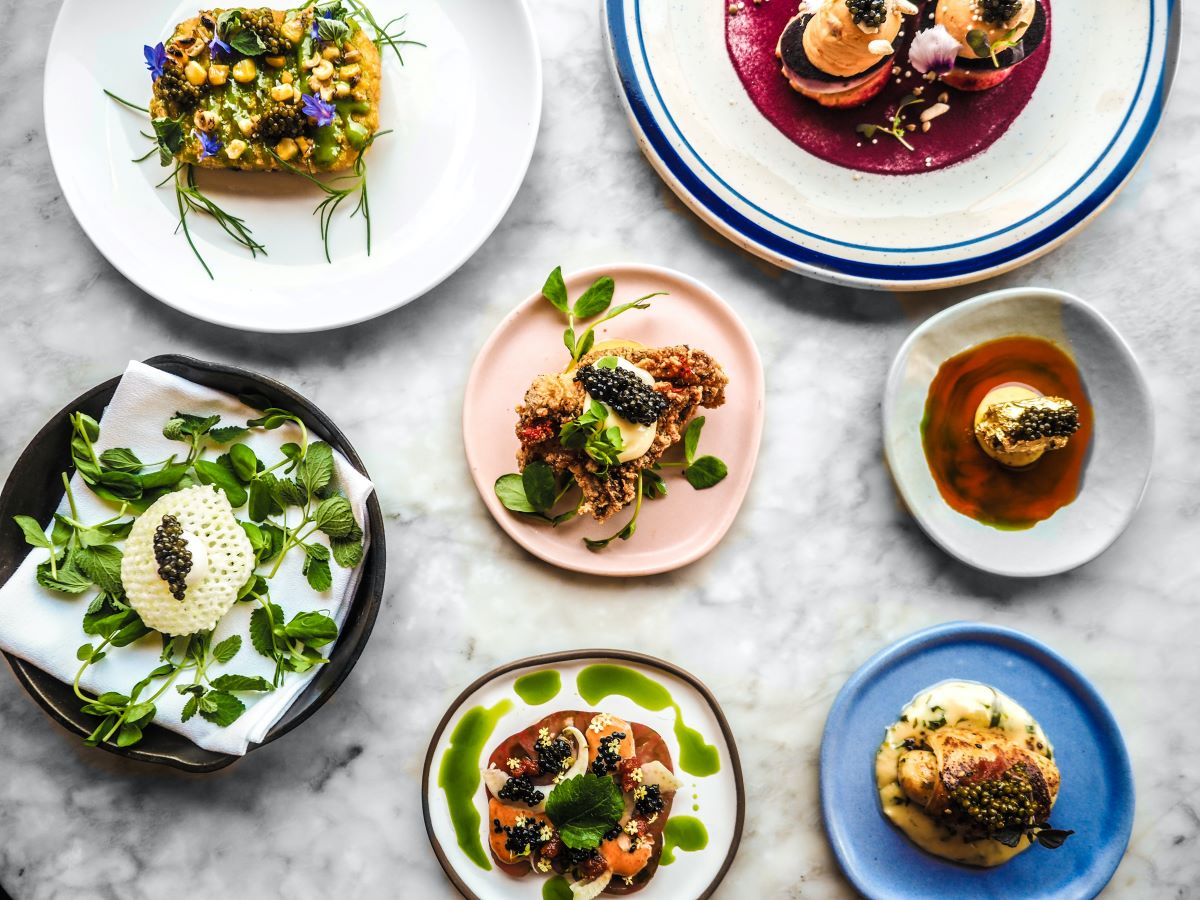
Navigating a French Menu in Paris
French menus will be divided by course, typically entrée, plat and dessert. There may also be sections for main course salads, casual snacks like croque monsieur and planches, or sharing plates of cheese and charcuterie.
If you’re after a multi-course feast, look for the restaurant’s menu offer. The menu prix fixe is often the best deal available, offering combinations of entrée + plat, plat + dessert or all three for a set price. The only downside to this menu can be its limited options, but many restaurants offer a range of dishes for guests to choose from.
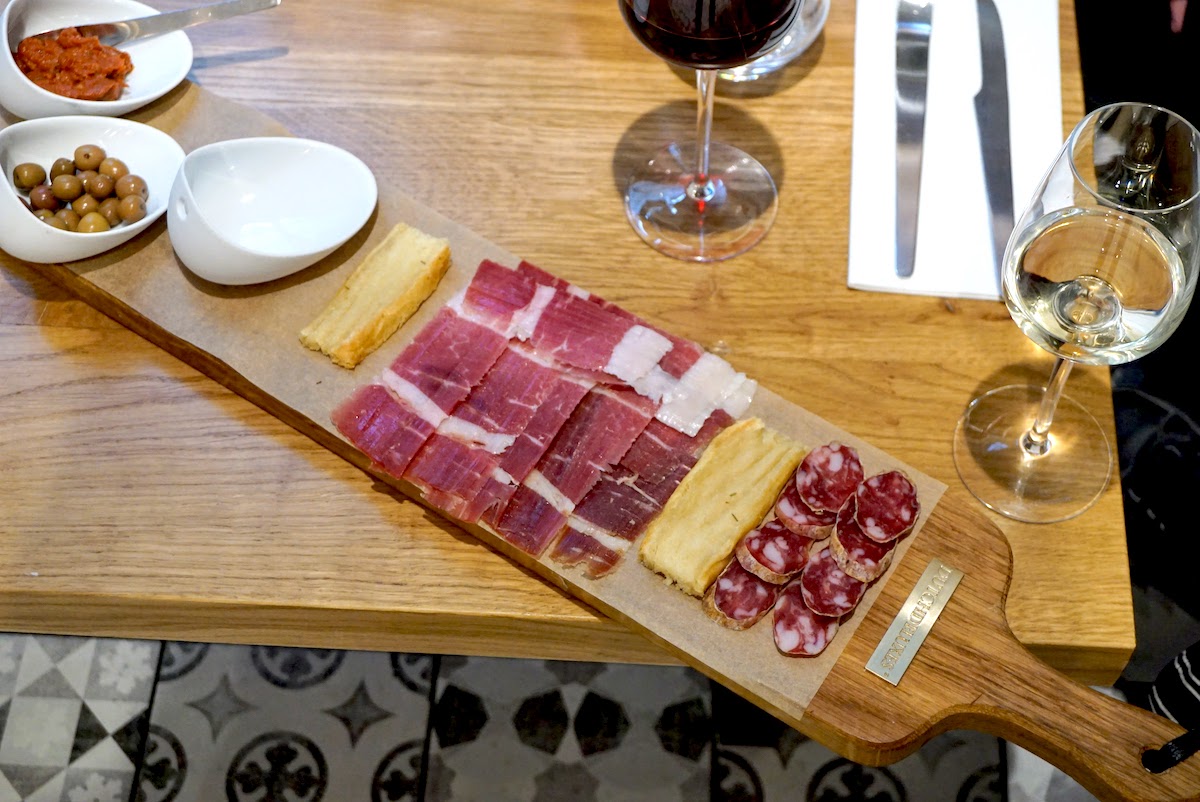
Drinks
First things first: decide what you’d like to drink.
French menus often separate aperitifs from the cocktail, wine and digestif options. If you’re feeling festive, opt for a Kir or Kir Royal. Made from either white wine or champagne and blackcurrant liqueur, this classic French aperitif makes for a great way to start things off before ordering wine with your main meal.
Next up, take a look at the wine menu. While French wine menus can be complex, ground yourself by starting with the basics. Decide whether you’re interested in a rouge, blanc or rosé and determine whether you’re after a glass, carafe or bottle to share. If you’d prefer a glass of water, ask your server for a carafe d’eau.
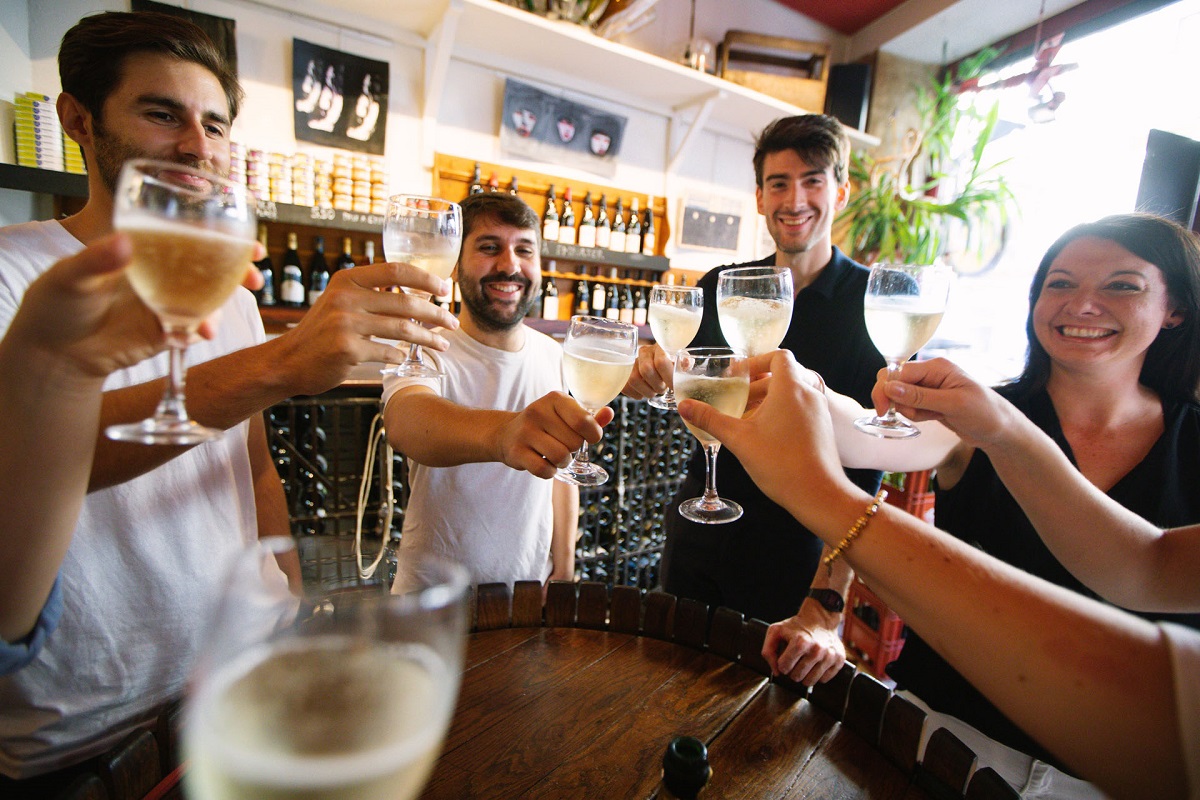
Appetizers
French appetizers tend to be portioned for the individual, rather than massive sharing platters. Traditional options range include oeuf mayonnaise (hardboiled eggs coated in homemade mayonnaise), tartare d’avocat et crevettes (avocado and shrimp tartare), escargot (six or 12 snails cooked in butter and garlic), and terrine de campagne (a rustic meat paté).
Mains
French food has a reputation for rich sauces, deep flavors, and attention to presentation—and we’re not complaining. Luckily, portions are smaller, making it possible to enjoy a rich three-course meal.
French mains, or plats, include hearty fare heavy on meats and cheeses. Try dishes like boeuf bourguignon, parmentier (a casserole dish combining flavored beef topped by a layer of creamy mashed potatoes) flavorful magret de canard au miel (honey-sautéed duck), bouillabaisse (fish stew from Provence) and boeuf tartare. Trust us, you won’t even miss the more familiar options like pastas and burgers.
Interested in a substitution? Skip it. While casual restaurants can be more open to making small changes, many restaurants resent requests to alter dishes as presented on the menu. After all, why mess with perfection?
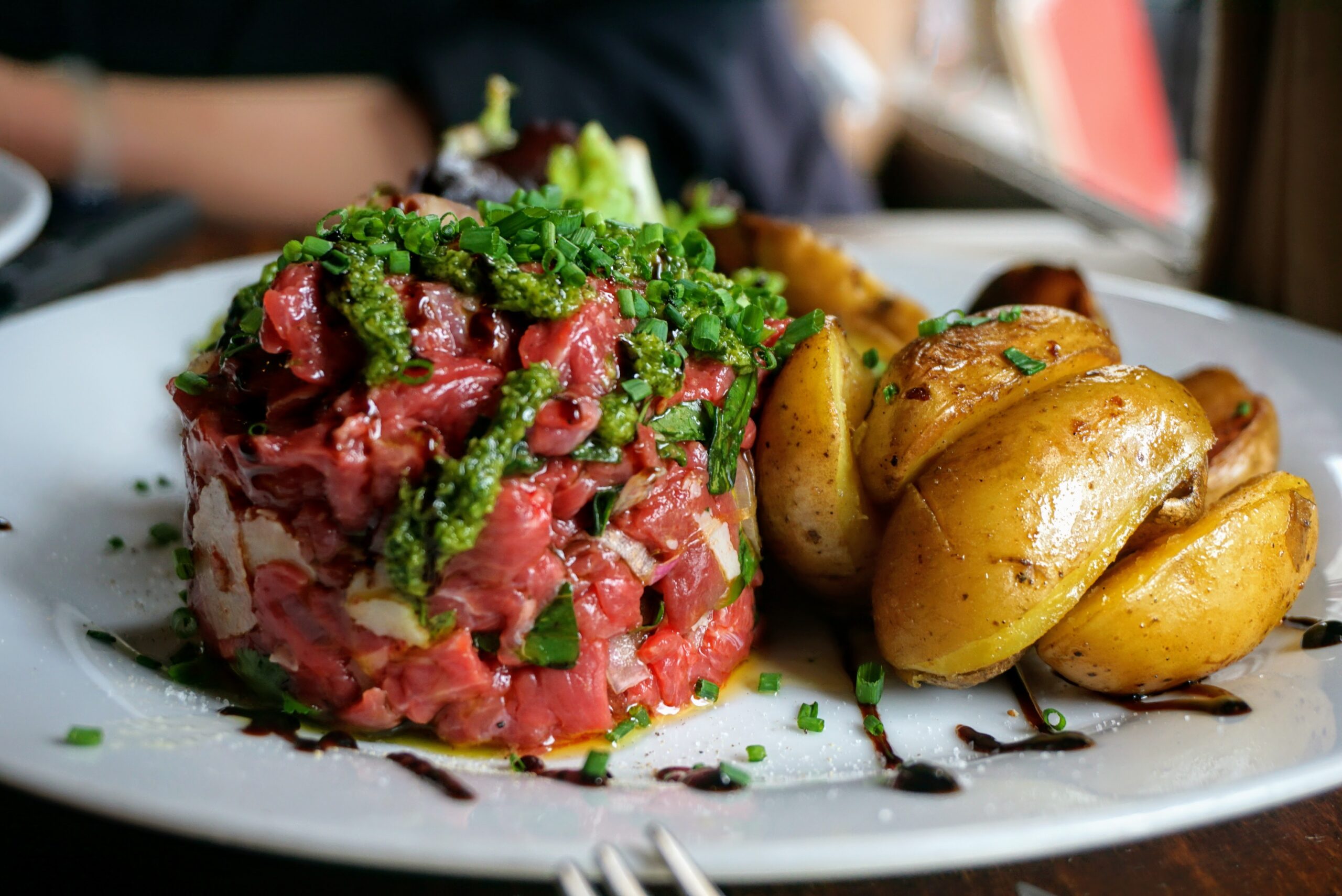
Dessert
Surprised to see cheeses listed alongside dessert? The French traditionally eat cheese at the end, rather than the beginning of the meal.
Not feeling a cheese sampler after a series of savory plates? Sample one of the sweet classics like crème brûlée, mousse au chocolat or tarte citron. For something different, try île flottante, a meringue floating on crème anglaise, or clafoutis, a baked, flan-like cake studded with sour cherries.
Ending your meal with an espresso is common, though not obligatory—especially if you’re not looking for an additional burst of caffeine before bedtime.
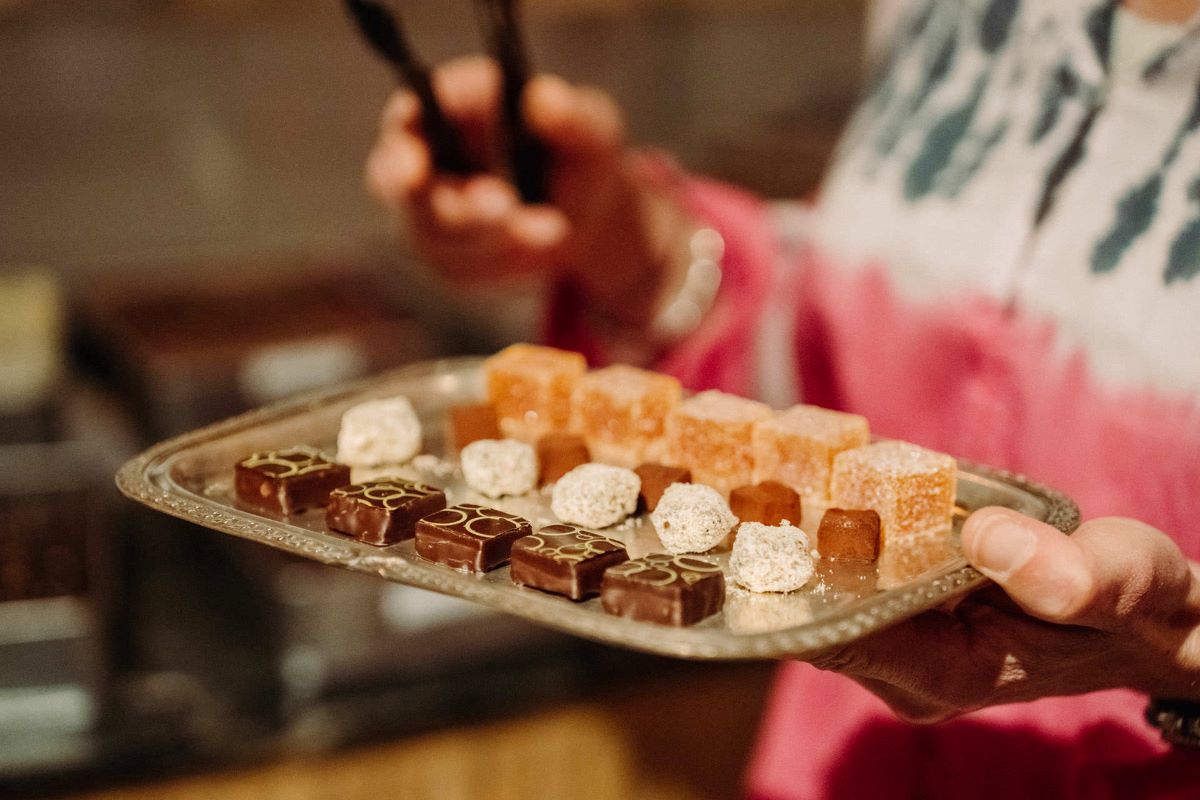
Tipping
To tip or not to tip?
Think of it as a gesture, rather than a strict obligation. Tax and service charges are rolled into the price of your meal. If your bill says €40, you’re welcome to leave €40 without feeling guilty. Offering a few euros as a reward for good service will never go amiss, but tipping culture isn’t ingrained in France.
If you’re paying by credit or debit card, there won’t be an option to add a tip. Rather, if you’re inspired to reward your server for going the extra mile, leave a couple of euros at your table.
Update notice: This article was updated on August 7, 2023.
Want to get an even more exclusive look at the ins and outs of French food culture? Our Paris Ultimate Food Tour is calling your name. Join us for a morning full of foodie fun in the Marais, where we’ll devour some of France’s most emblematic bites at the places that do them best.








